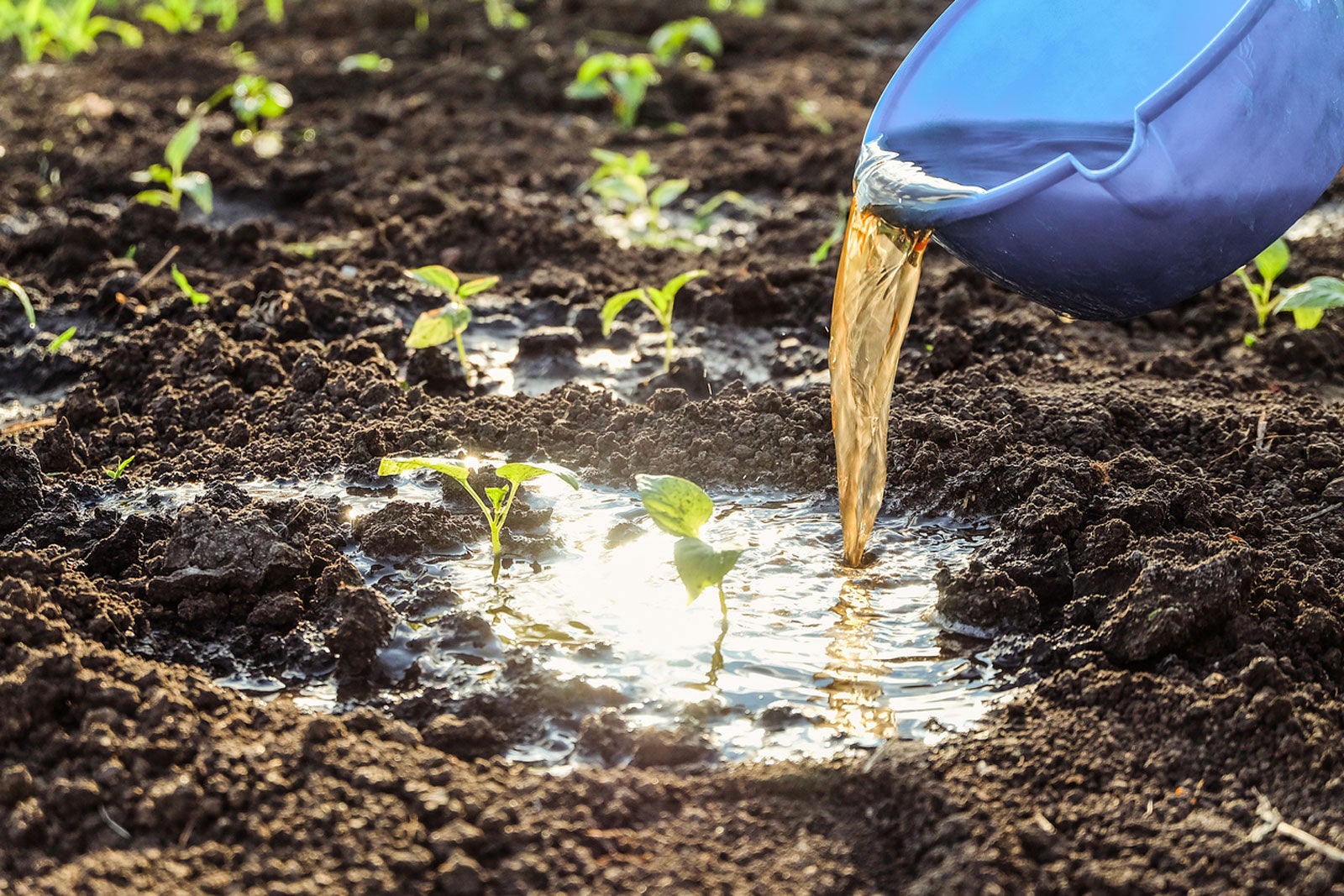What Is Soil Drenching: Tips On Using Soil Drenches In The Garden


You may have heard of the drenching of soil. There are many reasons to drench soil; the most common of which is to remove excess salts in container plants. The soil drenching technique is also used to introduce chemicals of one sort or another into plant roots, where they can be quickly taken up. The process is not difficult, but you do have to read the directions on the product carefully to deliver the right amount of solution and avoid harming the plant.
What is Soil Drenching?
Trees and other plants often need herbicides, nutrients, fungicides, or pesticides. While some gardeners choose to spray leaves and stems, still others use time-release granular formulas mixed into the soil. Using soil drenches allows quick delivery of the chemicals and avoids overspray and drift. Soil drench application is easy enough even for novice gardeners and practically foolproof.
Soil drenches are usually used to apply water-soluble chemicals which flood roots and are up-taken systemically to all parts of the plant. It can be useful in combating insects, fungi, and certain diseases, as well as delivering nutrients right to the roots.
It is important to read the preparation carefully to determine the timing for drenching your soil. With many preparations, you will also need some protective gear to avoid contaminating your skin during soil drench application.
Drenching of Soil - Determining DBH
The diameter at breast height (DBH) is exactly as it sounds. In order to determine how much chemical to mix in the water, you need a tape measure to determine this data. Stand at chest height and wrap the tape measure around the trunk or main stem. Divide the number you get by 3.14 for the diameter.
When trees are growing closely together, treat each trunk individually. If you have a plant that has split into many stems, measure the narrowest point between the widest part of the original stem and the split. This important measurement will help you determine the correct amount of chemicals to deliver to the plant.
For much smaller plants, like feeding seedlings or transplants in the garden, simply follow the label instructions for fertilizer amounts and dilute as needed.
Sign up for the Gardening Know How newsletter today and receive a free copy of our e-book "How to Grow Delicious Tomatoes".
Tips on Using Soil Drenches
In order for the formulation to penetrate easily, water around the base of the plant prior to application. The soil should be moist but not saturated.
You will also want to pull away any mulch around the main stem or trunk of the plant. The mulch can be replaced after the liquid has soaked into the soil.
The soil drenching technique takes little to no extra equipment, making it economical and simple. All you need is a bucket or watering can, a stir stick, chemical-resistant gloves, and a measuring tape. In some instances, you may have to excavate a trench around a plant to fill with the liquid.
Mix up the liquid and water it into the root zone of the plant. It's that simple!

Bonnie Grant is a professional landscaper with a Certification in Urban Gardening. She has been gardening and writing for 15 years. A former professional chef, she has a passion for edible landscaping.